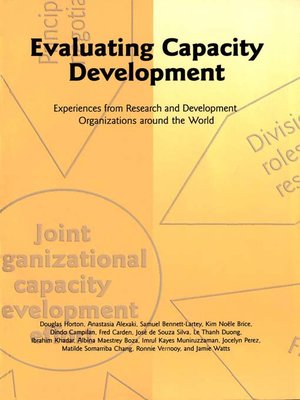Evaluating Capacity Development
ebook ∣ Experiences from Research and Development Organizations Around the World
By Douglas Horton

Sign up to save your library
With an OverDrive account, you can save your favorite libraries for at-a-glance information about availability. Find out more about OverDrive accounts.
Find this title in Libby, the library reading app by OverDrive.



Search for a digital library with this title
Title found at these libraries:
| Library Name | Distance |
|---|---|
| Loading... |
The international aid community is placing a growing emphasis on developing local capacity as the key to alleviating poverty and hunger in the developing world. Although ensuring the effectiveness of a capacity-building effort requires appropriate use of evaluation, few organizations have implemented a system for monitoring or evaluating the changes taking place during organizational development. In January 2000, ISNAR began the ambitious Evaluating Capacity Development Project, which aimed to improve capacity development efforts in research and development organizations through the use of evaluation.
This book explains how the project used an action-learning approach, bringing together people from various countries and different types of organizations. As they conducted six evaluation studies over the course of 3 years, project participants learned a great deal about capacity development and the process of evaluation. The authors use examples and lessons drawn from the evaluation studies as a basis for making more general conclusions regarding how capacity-development efforts and evaluation can help organizations to achieve their missions.
The ideas and examples given in this book move the field of evaluation forward significantly. The contributors have taken on board the concept that every evaluation of a capacity-development effort should contribute to the effort itself and, ultimately, to the organization’s performance. Too many evaluations are wasted in producing bulky reports that are seldom read, or that arrive too late to influence decisions. This book shows that a greater impact and a broader vision are both needed in theory and possible in practice.







